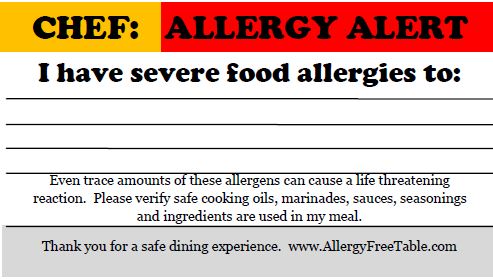Traveling has grown to be one of my biggest ambitions over the past few years. As someone who is fascinated by languages and culture, I would love to travel outside of the country on a regular basis. The catch is . . . my allergies.
Why have hesitation?
Food package labeling is a huge drawback of visiting another country. The United States has put in place extensive regulations on nutrition labels to ensure the safety of food allergy Americans. Not to my surprise, we are a rare case. Many countries do not strictly regulate ingredients in food packaging labels or provide warnings about cross contamination.
About a year and a half ago, I went on a little outing to an Asian market in Princeton, NJ with my mother and sister. We saw these cucumber flavored Lays chips that had been produced in China, but had a stick on, English label with the (supposed) ingredients. Happy that we got to buy so much new food to try from this market, my sister and I decided to try some on the way home. We pulled out the cucumber Lays as our first snack to try. Within thirty seconds of eating one chip, I knew I was having an allergic reaction. That night, I self-administered myself with an epinephrine auto injection.
 Incidents such as this can be absolutely terrifying. What I later found out from my allergist was that every country has different laws on food labeling. In this case a Chinese manufacturer had rented out the Lay’s brand name, produced a product, and added a label to abide by American labeling laws. They did not, however, create an even remotely accurate label.
Incidents such as this can be absolutely terrifying. What I later found out from my allergist was that every country has different laws on food labeling. In this case a Chinese manufacturer had rented out the Lay’s brand name, produced a product, and added a label to abide by American labeling laws. They did not, however, create an even remotely accurate label.
Having gone through such an experience creates anxiety in me when I think about eating abroad. It got me thinking, “restaurant food is almost never to be trusted, yet packaged food is no good either?”
Taking it Step by Step
There is no one way to go about traveling with food allergies. Everybody has different allergies with different levels of severity. But there are a few general tips I have picked up over the past few years in anticipation of traveling abroad during college.
Number 1: Communication is absolutely key!
Coordinating with hotel services in advance to departing is a great way to make your hotel feel like a safe space. When traveling through some sort of study abroad program, it is best to talk with the trip coordinators about the least stressful ways to keep yourself safe.
Number 2: Locate the nearest allergist and hospital.
If anything were to happen during your trip, it can make all the difference to have a plan on where you want to be treated in the case of anaphylaxis and a specialist to consult on refilling prescriptions.
Number 3: Bring many, many, MANY doses of your medications.
You never know what will happen on the trip or if you will suddenly be denied access to refilling your epinephrine prescription!
Number 4: Carry a chef’s card with you.
Bring an English card with your allergy information can be a helpful tool for eating out safely. Have your dietary needs written down can increase the likelihood restaurant services will understand your dining wishes.

Number 5: Bring non-perishable food.
There will be times when you are crunched for time or simply don’t feel comfortable eating the local food. It is always best to have a supply of food from home that you know will be safe to eat.
Take-Aways
Managing food allergies can be beyond stressful. Believe me, I’ve experienced this far too often. However, this shouldn’t stop anyone from traveling the world and gaining international experience. Everyone deserves to see the world!

I never thought of traveling as such a process for people with food allergies. It’s crazy that manufacturers can be inaccurate with their labels, especially when it could effect someone’s life! I really like the way this article was written and how you included tips to help others as well.
I am so sorry you had this experience, I cannot imagine how terrifying that must have been. I had no clue that the US was one of the only countries that has been labeling packaged food for allergens. Your 5 step course of action is so detailed and is great to keep in mind when traveling with people with allergies.
I appreciate how detailed the list of steps is. I’ve never seen a chef’s card before, but it sounds like a helpful tool for traveling to English-speaking countries. Would you have to translate it if you traveled elsewhere, or is there a larger system in place for the chef’s cards? It’s also odd to me that the poor labeling practices of some international food aren’t more scrutinized here.